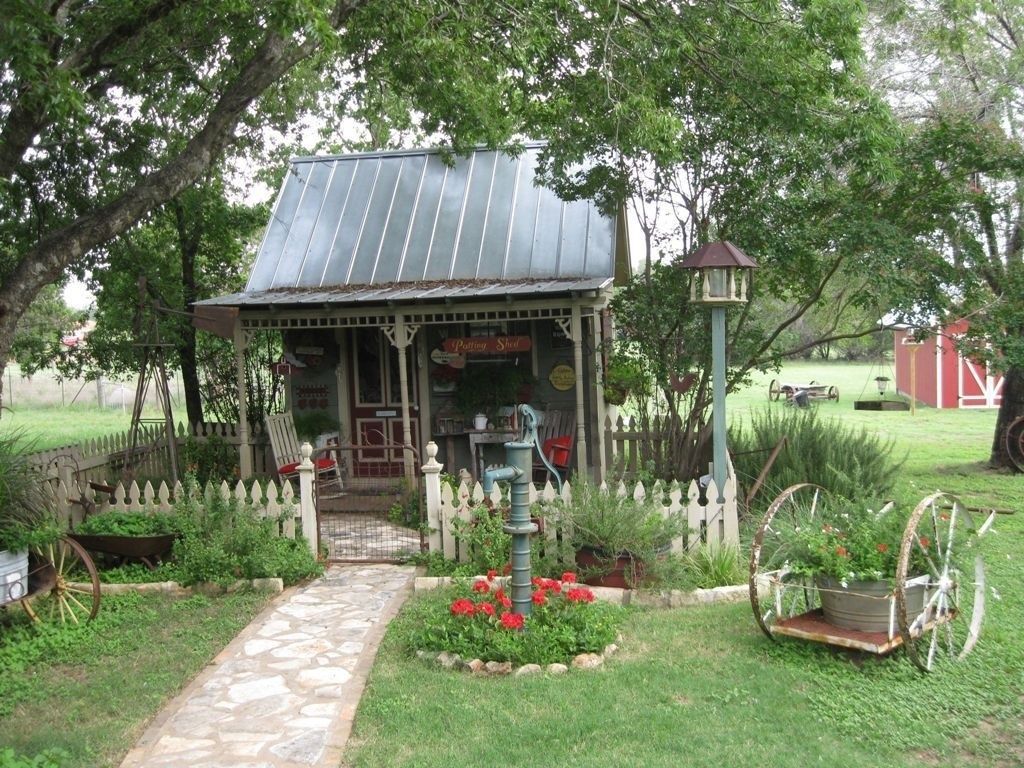Large garden sheds are used to create a separate space for relaxation or storage on the territory of a private house, protect from the sun, and implement a number of landscape design projects. They can be of different shapes and sizes, differ in mobility, adjoin a structure or act as a separate structure.
Types of canopy structures
The main purpose of the canopy is to protect the space under it from various factors. This may include precipitation, birds, sun and other influences that interfere with proper rest or the performance of a number of functions of a particular zone. The design is selected depending on the purpose of the garden shed.
Visor
The visor is designed to decorate the entrance area and protect it from snow, rain, and ice. It not only covers the doors and windows, but also steps and handrails, preventing the area from getting slippery, which can cause injury. The visor is connected to the building on one side, and additional supports are used if necessary.
Canopy extension
A canopy can cover the entire territory of the yard or only part of it. It is distinguished by its large dimensions and acts as an extension that is attached to the house and installed onto strong support beams. Typically, the canopy covers garden paths, the barbecue area, tables, furniture, bicycles, toys, plants and other items that need additional protection. This option can also be completely stationary (connected to support beams on all sides).
Greenhouse
It got its name from the use of glass (or other transparent material), and also due to its closed type of construction. The greenhouse structure is equipped with sliding elements. It is often used to decorate the pool area and protects it from leaves, insects, animals, and precipitation. At the same time, transparent walls will give the area an aesthetic appearance.

Alcove
It can be in the form of a polyhedron, circle, square, or have a non-standard shape. This is the most attractive type of large garden sheds, which will be a great addition to the landscape design and “expand” the yard with a cozy and unique area. It can be either open or closed.
Game Zone
This type of canopy has an open layout and is designed to protect horizontal bars, swings, and sandboxes from the weather and the sun.
Car canopy
Used to organize a parking space for one or two cars, if it’s not possible to build a garage. Also, this zone can also be used for parking the guests’ car.
Materials for awnings
Materials such as boards, beams, painted metal, brick, as well as natural or artificial stone are typically used for constructing the foundation (support beams). The choice of support materials depends on the operating conditions of large garden sheds, as well as the aesthetic requirements of the structure.
For the roof and walls (if any), the following materials are used:
- Glass. It has a sophisticated appearance and adds to the landscape, but is rather fragile and may be high maintenance. In addition, this design is heavy and also one of the most expensive.
- Wooden canopy. This natural material is used for all types of construction. The wood requires special treatment to protect it from external factors. Wood is easy to work with and allows you to create interesting carvings and geometric ornaments for decoration.
- Metal profile. It is a strong, reliable and durable material that has a modern look. The surface can be painted any color. Treatment with anti-corrosion agents is required.
- Decking. The most popular and high-demand option. It is inexpensive, lightweight and attractive, easy to install and may be combined with other materials. At the same time, in terms of strength, it is in no way inferior to a metal profile.
When choosing materials, the general style of the house and its landscape design are taken into account. For simple structural solutions, it is recommended to use polycarbonate and plastic, and metal tiles for complex gable and arched roof options.
Types of hinged structures by degree of openness
Open designs are among the simplest and most convenient. They can be completely stationary or mobile, folding or collapsible, installed only for the summer season. The roof rests on vertical supports, there are no walls or partitions.
Closed awnings are only stationary. To organize the openings for the passage, sliding elements are used. For walls, transparent dense cellophane, plastic, glass, and other transparent and translucent materials are mainly used to provide a sufficient amount of light.
Semi-closed objects can have one or two full-fledged walls, while covering the entire courtyard or part of its territory. The design usually calls for the installation of parapets.
Design options
The large garden shed is, by its very purpose, a unique element that can be versatile. Its general design concept is selected based on the shed’s main purpose:
- for the play area, the roof can be made in the shape of a flower or an umbrella. It can also be decorated and painted bright and playful colors;
- for a recreation area, wooden gazebo-type designs are preferred, as well as decorations such as plants, garlands, textiles;
- a place for hobbies should be equipped with convenient cabinets for storing various small items, art supplies, books, notebooks and other things;
- for creating a barbecue area with tools and equipment, it is worth considering standard options, as the main emphasis should be on performance and easy maintenance.
Despite the simplicity of garden sheds, using different design techniques will make it possible to turn into a small masterpiece. Large garden sheds do not require special preparation of the site and can be installed in any area.





